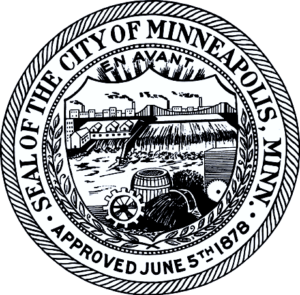 BY ROBERT THOMPSON
BY ROBERT THOMPSON
In 2011, the city of Minneapolis took control of the Neighborhood Revitalization Program (NRP) in what many considered a hostile takeover. In 2019, the city declared that the NRP was an example of structural racism and continues to insist that NRP and neighborhood organizations only benefit white, affluent homeowners.
The NRP gained national and international recognition for its model program to support grassroots planning. Since 1993, neighborhood organizations were funded generously by the NRP in their efforts to improve communities. Between 1993 and 2018, the NRP Policy Board provided $236 million to support 136 neighborhood action plans developed by residents and approved by the neighborhood organization, the NRP Policy Board, and the city and other jurisdictions.
Phillips neighborhoods were awarded more than $20 million by NRP to implement projects such as the Green Institute, the Midtown Greenway, and the Franklin Theater and Heart of the Beast Theater restorations. The neighborhoods used NRP funds to support many innovative housing projects, such as Bii Di Gain Dash Anwebi Elder Housing, Midtown Exchange Apartments, and Greenway Heights, as well as creating neighborhood-driven home loan and grant programs to help residents become homeowners and to fix and restore their homes.
So, how has the city performed since the takeover? An analysis of the city’s management of neighborhood funding programs shows significant disinvestment in the most diverse and least-affluent neighborhoods by the city, and this disinvestment occurs at several levels.
Many past studies noted that the NRP allocations heavily favored the least affluent and most diverse neighborhoods of the city. Despite this, in 2019 the city declared that its funding programs were more equitable than NRP. This is not true. Annual allocations to neighborhoods such as Phillips and Near North fell as much as $111 per household after the city takeover, compared to only $31 per household for more affluent areas of the city such as Southwest or Calhoun-Isles.
Because of the generous funding of NRP, and because neighborhoods generated an additional $40 million through wise planning, neighborhoods are still using NRP funds today. Since the city took control of the NRP purse strings, however, annual NRP expenditures have fallen significantly.
This decrease in the amount of checks actually being written each year is not impacting neighborhoods equally. Annual expenditures fell far more sharply in the most diverse and least affluent neighborhoods, while actually increasing in the least diverse and most affluent neighborhoods.
Average annual NRP expenditures for the city’s 20 most diverse neighborhoods fell by 30% from 2015 to 2021 but increased by 37% in the 20 least diverse neighborhoods.
Likewise, annual NRP expenditures for the city’s 20 least affluent neighborhoods fell by 47%, while expenditures in the most affluent neighborhoods increased by 61%.
It is not because the funds aren’t available. The NRP fund balance is currently around $26 million. The least affluent and most diverse neighborhoods have significantly more NRP funds stored up than their more affluent counterparts because the NRP generously funded the least affluent neighborhoods. These same neighborhoods also generated millions in additional revenue to support NRP projects.
This is also not a problem of more affluent and less diverse neighborhoods taking funds from less affluent or more diverse neighborhoods.
The problem is a city structure that is not designed properly to serve diverse and low-income communities well. In fact, it is designed to fail those communities.
Many neighborhood leaders report that the city’s Neighborhood and Community Relations Department erected barriers where the NRP used to create opportunities. It should come as a surprise to no one that more affluent communities will have more discretionary time and influence to overcome barriers that will be insurmountable for communities where most residents work multiple part-time jobs just to stay ahead. But these are precisely the kinds of barriers the city has established.
The Roof Depot controversy, and many similar issues, should show that the city’s agenda is not always the same as the community’s agenda. The problem is that the city has all the authority as well as the funding. It gets to set the rules and to make them … or break them. It is now using control of neighborhood funding to try to control neighborhood organizations.
The NRP provided power and authority to residents working through their neighborhood organizations, and this became a threat to the city’s power and control. It is past time for the mayor and City Council to reform or close the Neighborhood and Community Relations Department, and to empower and restore autonomy to neighborhood organizations.






















